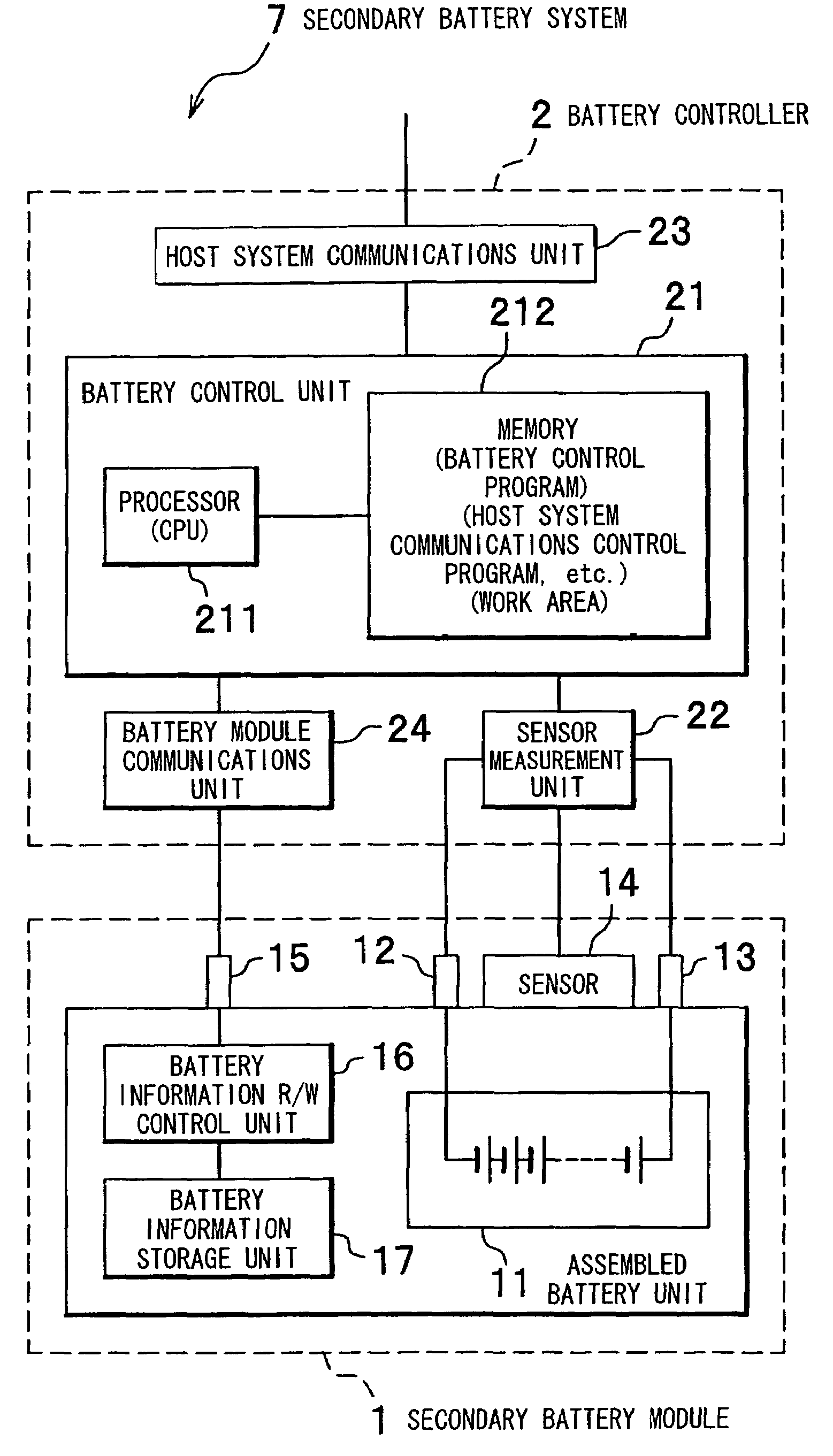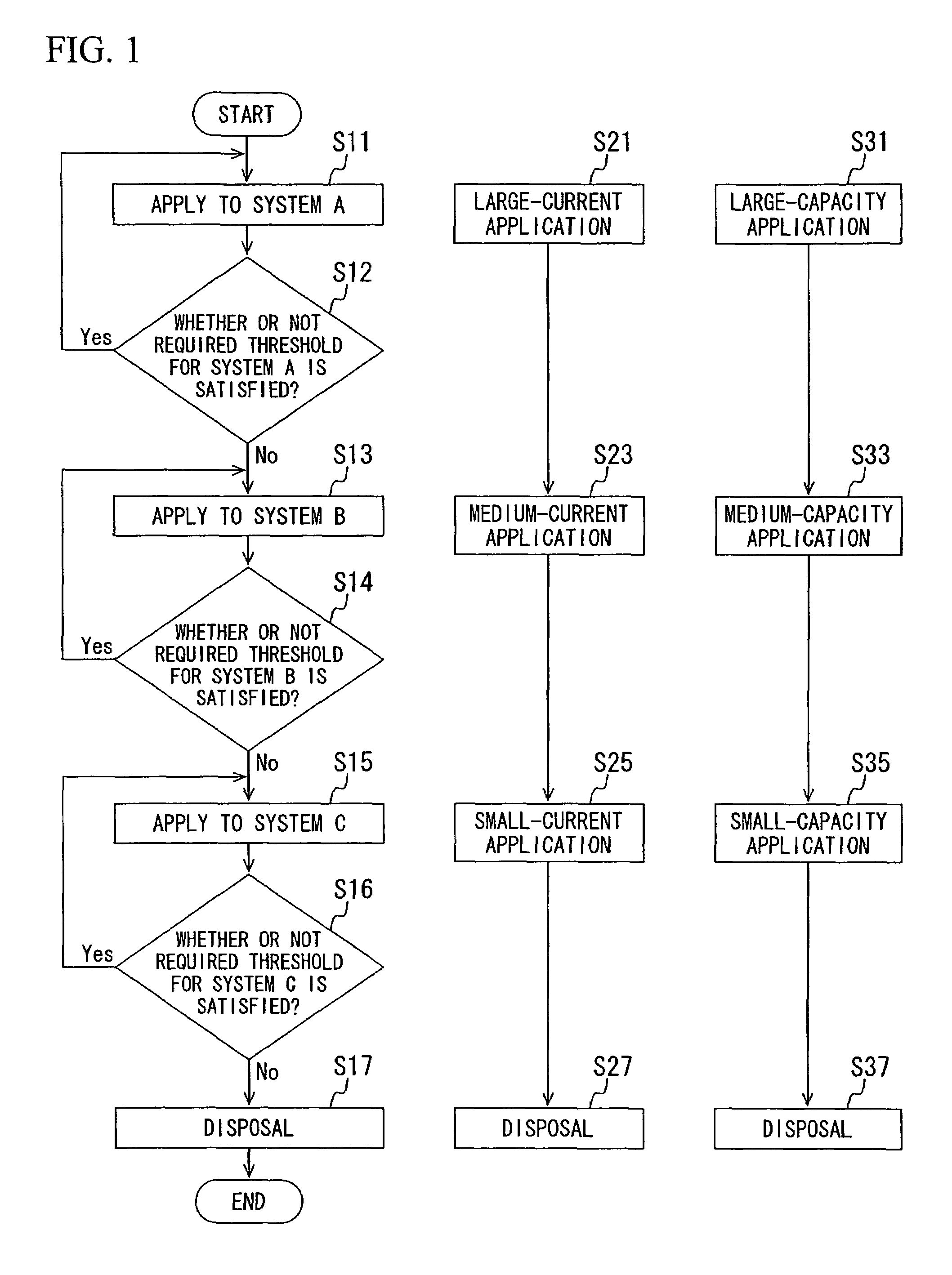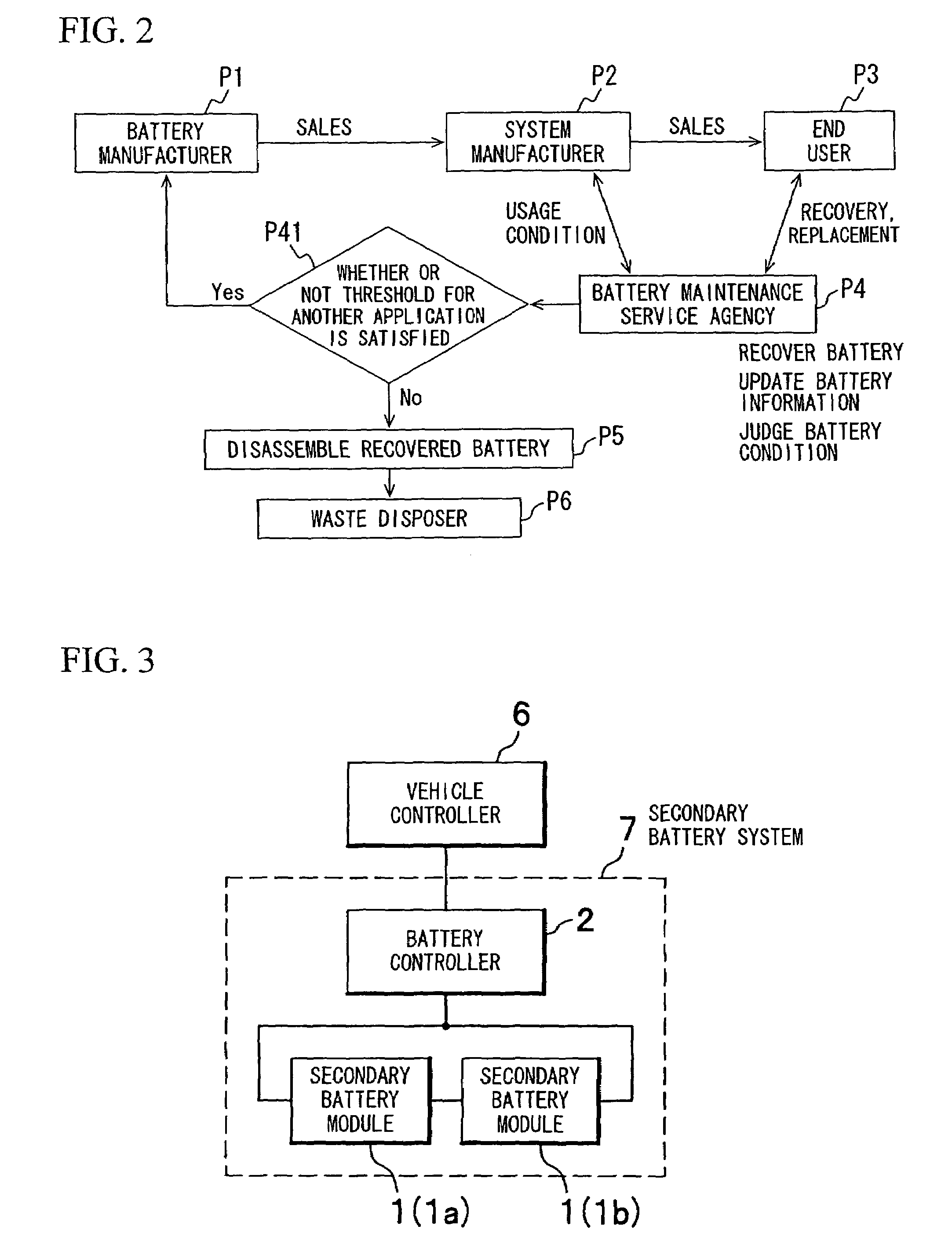Secondary battery module, battery information management device, battery information management system, secondary battery reuse system, secondary battery recovery and sales system, secondary battery reuse method, and secondary battery recovery and sales method
a secondary battery and module technology, applied in secondary battery servicing/maintenance, secondary battery recycling system, secondary battery recycling method, etc., can solve the problems of consuming large amounts of high-functional and expensive materials, and affecting the operation of secondary batteries. , to achieve the effect of preventing the loss of electrical characteristic information, reducing the disposal amount of secondary batteries, and reusing secondary batteries smoothly and efficiently
- Summary
- Abstract
- Description
- Claims
- Application Information
AI Technical Summary
Benefits of technology
Problems solved by technology
Method used
Image
Examples
first modified example
of the Embodiment
[0091]In the above-described embodiment, the battery module communications unit 24 of the battery controller 2 is connected to the battery information R / W terminal 15 of the secondary battery module 1 by use of wired signals as shown in FIG. 4 and the like. In a modified example of the embodiment, they are mutually connected by use of wireless signals. Moreover, the battery information R / W control unit 16 and the battery information storage unit 17 are formed of what is termed as radio frequency identification (RFID) tags. A storage unit of the RFID tag is generally formed of a nonvolatile memory such as a flash memory, and is therefore suitable for the battery information storage unit 17 as well.
[0092]In this modified example of the embodiment, the battery module communications unit 24 of the battery controller 2 is formed of a RFID tag reader-writer. Similarly, the battery module communications unit 33 of the battery information management device 3 and the battery...
second modified example
of the Embodiment
[0094]FIG. 9 is a view showing an example of a configuration of a secondary battery module according to a second modified example of the embodiment. A secondary battery module 1a in the modified example of the embodiment includes an external connection battery information R / W control unit 16a in addition to the battery information R / W control unit 16 to be connected to the battery controller 2. Specifically, the external connection battery information R / W control unit 16a is connected to an external device through an external connection battery information R / W terminal 15a.
[0095]Here, the external device is assumed to be either the battery information management device 3 or the terminal device 4. Accordingly, a communications interface circuit of the external connection battery information R / W control unit 16a for communicating with the external device may be any of an RS-232C interface, USB, LIN, and also a network interface for controlling a protocol such as CAN ...
third modified example
of the Embodiment
[0097]FIG. 10 is a view showing an example of a configuration of a secondary battery module according to a third modified example of the embodiment. A secondary battery module 1b in the modified example of the embodiment includes a portable storage medium storage device battery information R / W control unit 16b in addition to the battery information R / W control unit 16 to be connected to the battery controller 2. Here, the portable storage medium storage device may be a flexible disk, a hard disk, a compact disk (CD), a digital versatile disk (DVD), a USB memory, an integrated circuit (IC) card memory, and the like. A portable storage medium storage device herein is assumed to include mechanism drive units for disk rotation, head movement and the like in the case of a disk type storage device.
[0098]Moreover, a portable storage medium storage device battery information R / W terminal 15b, a read button 18, and a write button 19 are provided in association with the porta...
PUM
 Login to View More
Login to View More Abstract
Description
Claims
Application Information
 Login to View More
Login to View More - R&D
- Intellectual Property
- Life Sciences
- Materials
- Tech Scout
- Unparalleled Data Quality
- Higher Quality Content
- 60% Fewer Hallucinations
Browse by: Latest US Patents, China's latest patents, Technical Efficacy Thesaurus, Application Domain, Technology Topic, Popular Technical Reports.
© 2025 PatSnap. All rights reserved.Legal|Privacy policy|Modern Slavery Act Transparency Statement|Sitemap|About US| Contact US: help@patsnap.com



